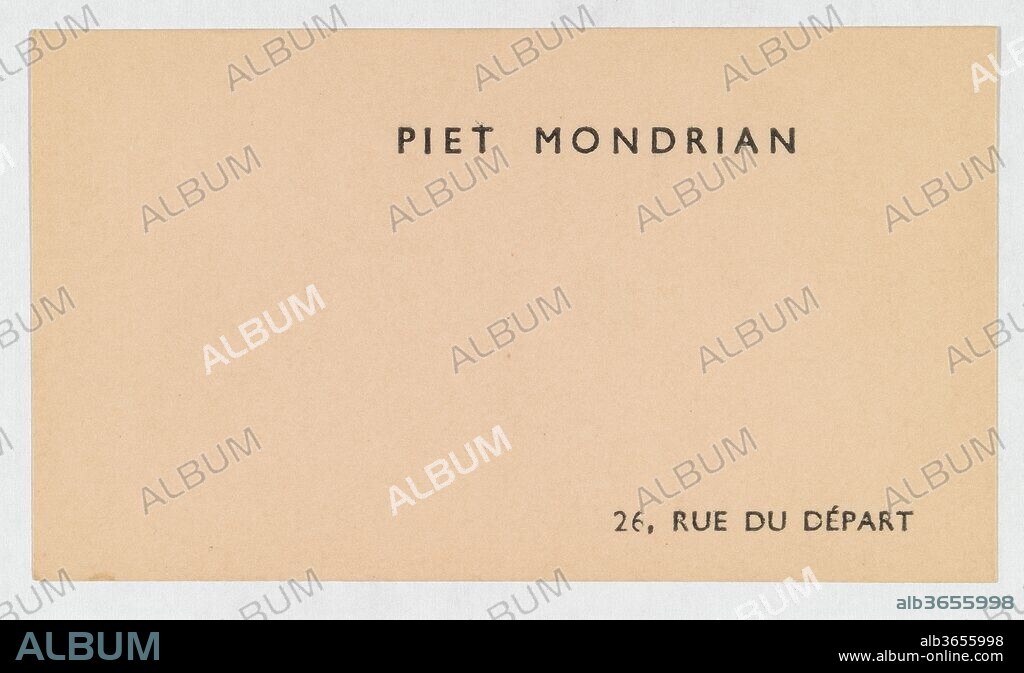alb3655998
ANONYMOUS. Piet Mondrian, calling card

|
Add to another lightbox |
|
Add to another lightbox |



Author:
Title:
Piet Mondrian, calling card
Caption:
Piet Mondrian, calling card. Artist: Anonymous. Dimensions: Sheet: 1 3/4 × 3 1/16 in. (4.4 × 7.7 cm). Date: ca. 1919-38.
Between the years of 1977 and 1989, F. C. Schang donated a group of 64 artists' calling cards to the Metropolitan Museum of Art. Schang began collecting calling cards as an accompaniment to his stamp collection; however, the former eventually eclipsed the latter. Now a part of the Drawings and Prints Department's permanent collection, the calling cards are housed in an album that also includes Schang's collection of stamps and other ephemera.
Calling cards are thought to have originated in Britain with the habit of writing messages on the backs of playing cards. Ladies used hearts while men chose from diamonds or spades. Special cards designed for such messages began to appear in the mid-18th century. Printed with one's name and, later, their address, engraved calling cards were originally used only by the nobility and upper class. Those who could not afford to have cards printed would write their names on white paper or unglazed pasteboard.
By the beginning of the 19th century, the calling card was a firmly-established social necessity. For many, the card was used for dating, or "calling" upon a potential love interest. But it became popular among artists as well, many of whom used them to send notes and direct potential patrons to their studio. (See: Banfield 1989, pp. 1-4.).
Technique/material:
letterpress
Museum:
Metropolitan Museum of Art, New York, USA
Credit:
Album / Metropolitan Museum of Art, NY
Releases:
Model: No - Property: No
Rights questions?
Rights questions?
Image size:
4400 x 2663 px | 33.5 MB
Print size:
37.3 x 22.5 cm | 14.7 x 8.9 in (300 dpi)
Keywords:
 Pinterest
Pinterest Twitter
Twitter Facebook
Facebook Copy link
Copy link Email
Email
